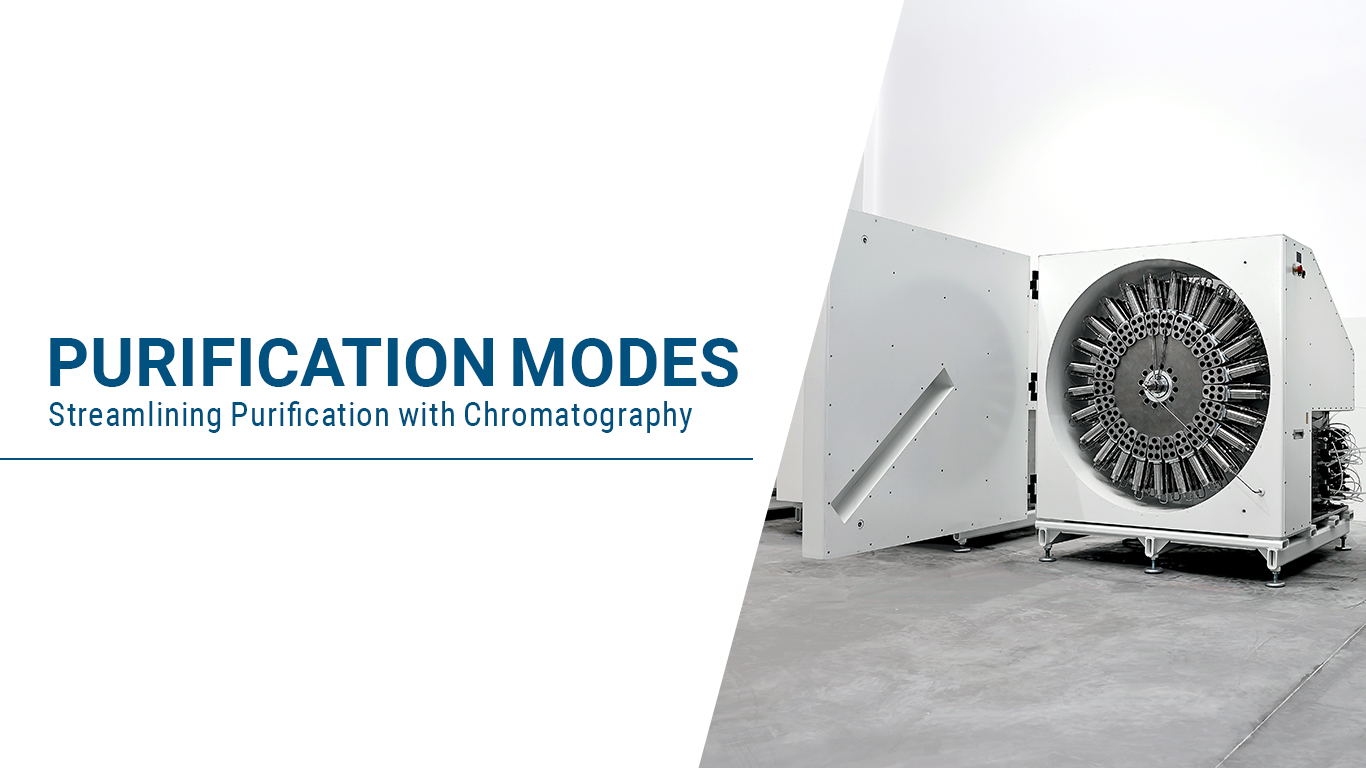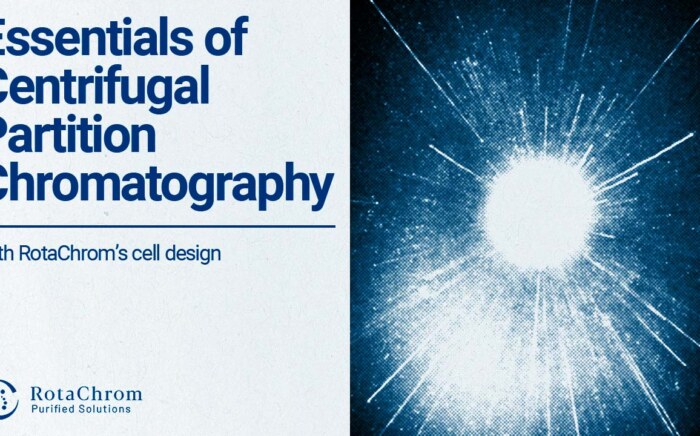Increasing separation efficiency by pH adjustment in Centrifugal Partition Chromatography
NewsCPC Recap
Centrifugal Partition Chromatography (CPC) revolutionizes traditional chromatographic techniques by replacing conventional chromatographic columns with interconnected cells. These cells, which act as columns, are linked in series through ducts that are connected to a large rotor. This rotor is filled with the liquid stationary phase, and through the application of a powerful centrifugal force, the liquid within the cells is immobilized.
The two-phase system in CPC consists of the stationary phase within the rotor and the mobile phase containing the sample to be purified. The mobile phase is introduced into the rotor under pressure and is then pumped through the stationary phase in the form of minute droplets. This dynamic flow allows for efficient interaction between the sample and the stationary phase, leading to effective separation and purification.
The flexibility of the CPC system is enhanced by a valve that enables the direction of flow to be switched. As a result, the CPC system can operate in two modes: ascending mode and descending mode. In ascending mode, the lighter phase serves as the mobile phase, while in descending mode, the heavier phase acts as the mobile phase. This versatility allows for optimization and adaptation of the purification process based on the specific characteristics of the target compounds.
By employing this innovative liquid-liquid chromatographic approach, CPC offers distinct advantages over traditional methods, including improved separation efficiency, higher sample loading capacity, and reduced solvent consumption. Furthermore, the ability to switch between ascending and descending modes expands the range of applications and enhances the versatility of the CPC system.
CPC Modes
Let’s delve into the operating modes of a CPC device, using RotaChrom’s technology as an illustrative example. In a RotaChrom CPC machine, the rotor and interconnected cells function as the column, providing the foundation for different methods of operation. Specifically, the CPC device can be operated in two distinct modes: ascending mode and descending mode.
The primary determining factor for selecting the mode is the density of the mobile phase. This is because the density of the liquid mobile phase relative to the immobilized stationary phase determines whether it is denser or less dense. In ascending mode, the mobile phase is the less-dense of the two phases. Consequently, the flow direction becomes opposite to the centrifugal force. On the other hand, in descending mode, the mobile phase becomes the denser phase. Generally, operating in descending mode tends to yield better separation results.
It is possible to operate a RotaChrom CPC device in both modes, but the level of preparation required may vary depending on the device. In the case of rCPC, a single machine can be operated in either mode without the need for additional parts or preparations. However, for the iCPC, the rotor needs to be switched depending on the desired mode of operation. Specifically, a different rotor is utilized for ascending mode compared to descending mode. Nonetheless, the iCPC device itself can remain the same, with only the rotor requiring modification.
This flexibility in operating modes provides users with the ability to adapt the purification process based on their specific needs and target compounds. Whether it is ascending mode or descending mode, RotaChrom’s CPC technology offers efficient and versatile separation capabilities, facilitating diverse applications across various industries.
Further Resources
To learn more about CPC and chromatography in general, click any of the links below.



